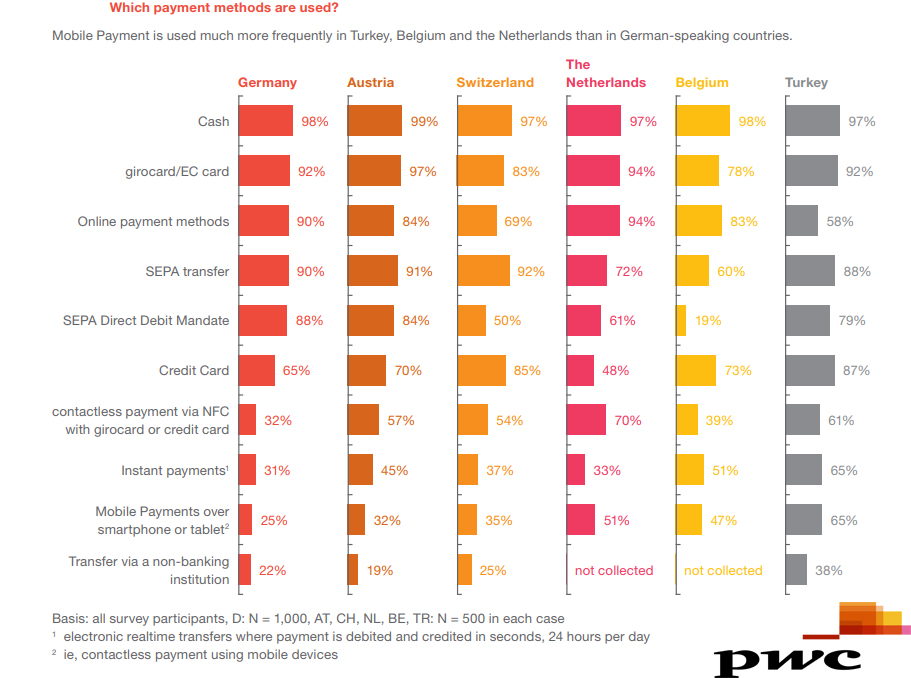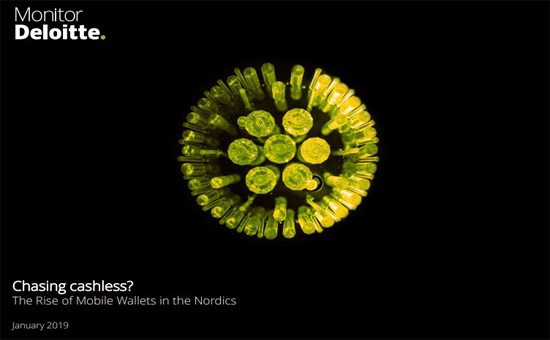Mobile Payment Report, 2019 | PwC
Digital Payments | Austria
Payment has evolved from the physical exchange of notes and coins, to writing checks, to transferring payment card details over the phone or the Internet. This evolution has involved a shift from the physical transference of tangible tokens of value to an exchange of information between parties. The emergence of e-commerce has further digitized the payment process, whereby payment details are sent over open networks with no physical contact between the buyer and the seller. The recent development of high-speed mobile data networks has created a new channel for commerce, while more sophisticated mobile devices are enabling the virtual exchange of payment information known as proximity payments. The shift from physical to virtual payments has brought enormous benefits to consumers and merchants. However, it has put extra pressure on payment service providers, including banks and card companies, and mobile operators, to provide robust security and interoperability. This shift precipitates a need for retailers to adapt toward fast, simple and secure mobile payments.
The Key Findings of The “Mobile Payment, 2019” Report:
- 46% of Germans under the age of 30 are using mobile payment systems.
- 21% of surveyed Austrians have sent money to other people from mobile device systems.
- 7 out of 10 Swiss under the age of 40 intend to use mobile payment in the next five years.
- 54% of surveyed men are using mobile payment systems in the Netherlands.
- 30% of surveyed Belgians are concerned about the protection of data.
- 68% of surveyed Turkish women are using mobile payment systems.

A Graph Shows The Most Used Payment Methods Across The Mentioned Countries, 2019.
The Content of “Mobile Payment, 2019” Report:
- Table of Figures.
- Mobile Payment Widely Accepted & Used.
- Mobile Payment 2019 – Country Deep Dive.
- Germany.
- Austria.
- Switzerland.
- The Netherlands.
- Belgium.
- Turkey.
- Contacts.
The “Mobile Payment, 2019” Report Table of Figures:
- Which Payment Methods Are Used?
- How Often Payment Methods Will be Used in Future.
- What Are Mobile Payments Used to Pay For Today or Will be in The Future?
- What Are The Advantages and Disadvantages of Mobile Payment?
- What is The Image of The Local Bank?
- What Image does FinTechs Have?
Number of Pages:
- 39 Pages.
Pricing:
- Free.
Methodology:
Data in this report is based on a representative international survey of the general population that was commissioned by PwC. Between September and October 2018, the survey reached 5,500 people across six countries: Germany, Austria, Switzerland, the Netherlands, Belgium and Turkey.







